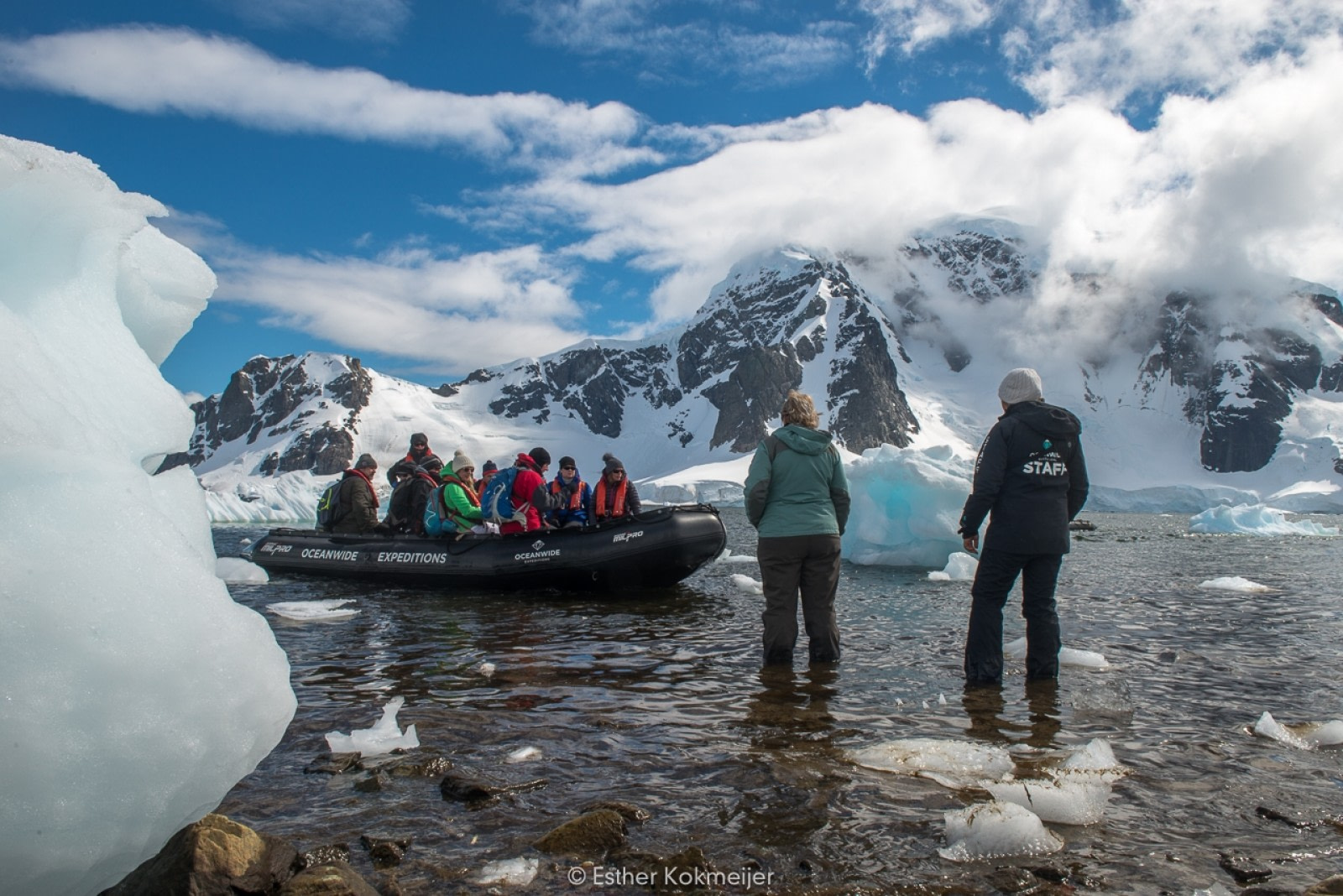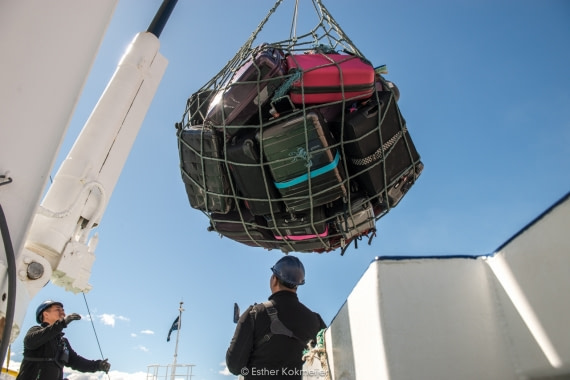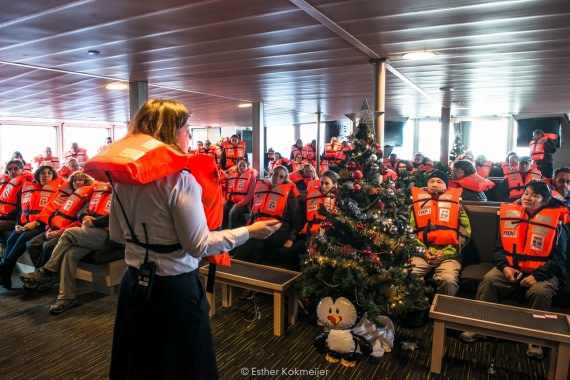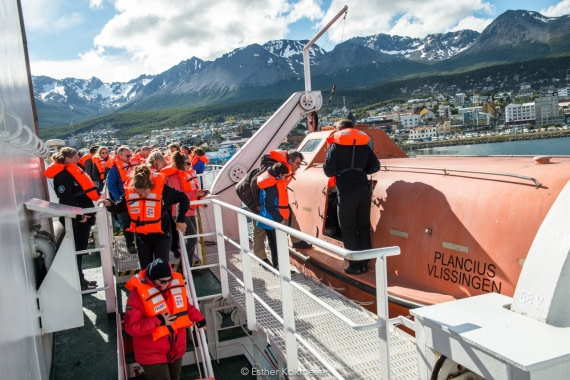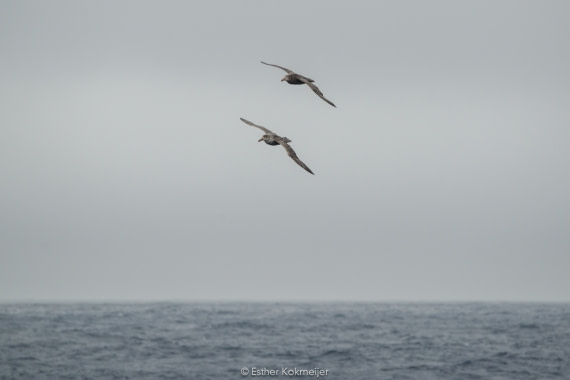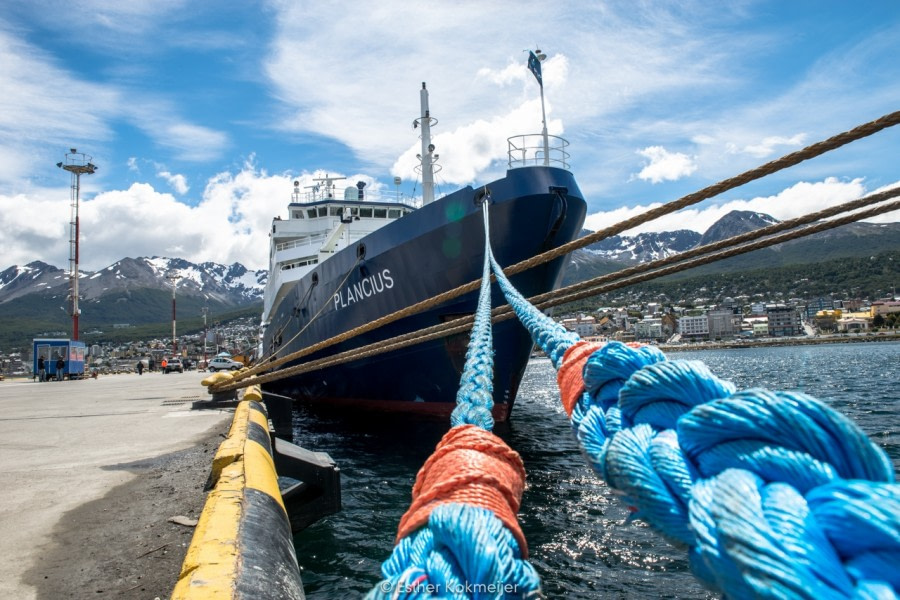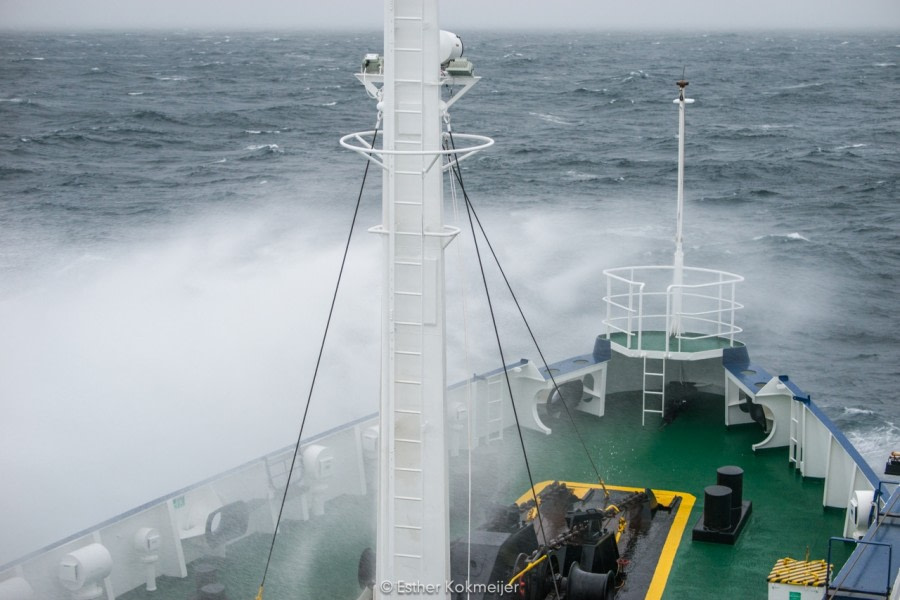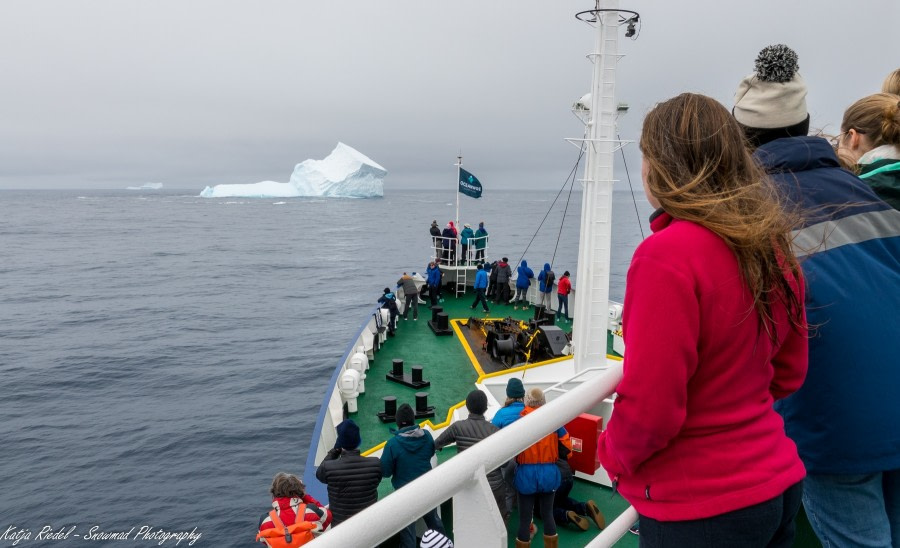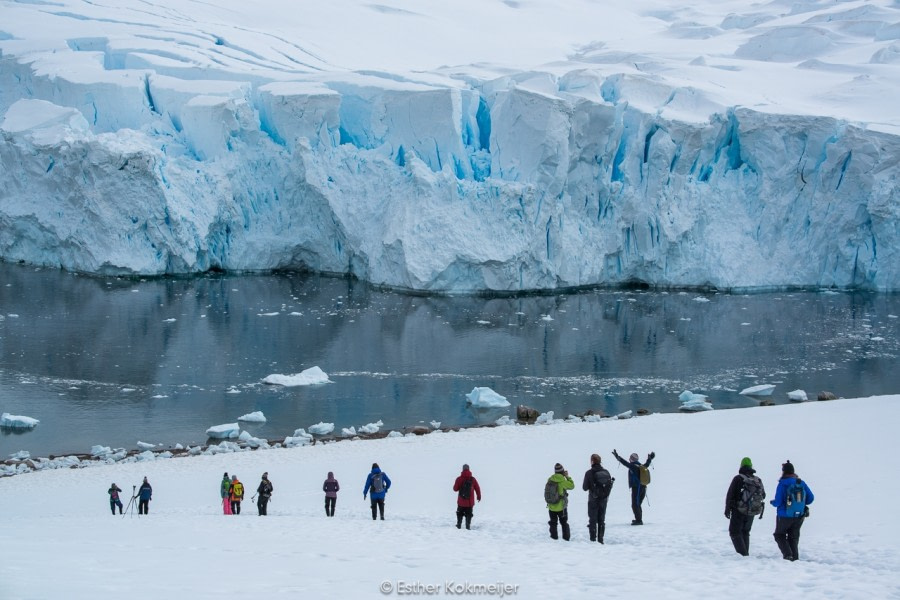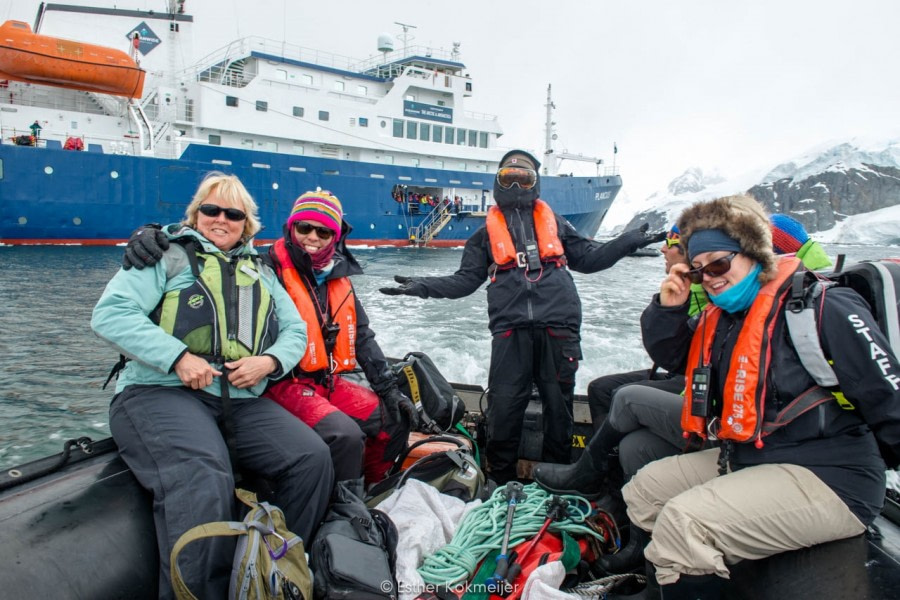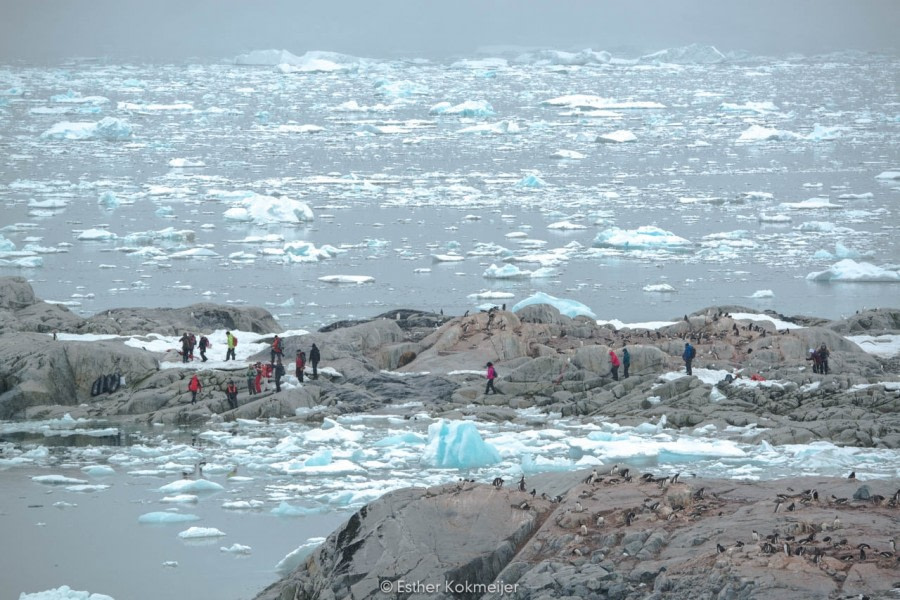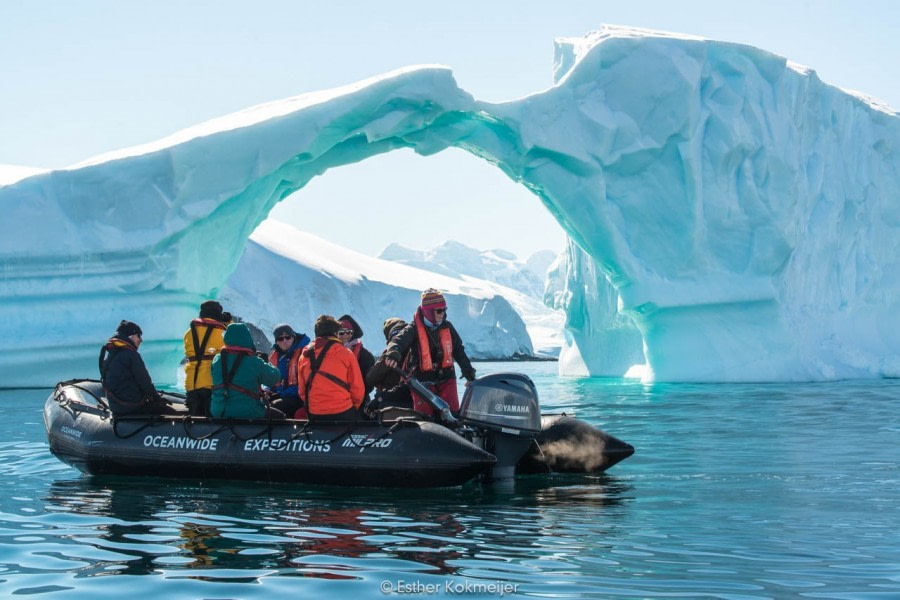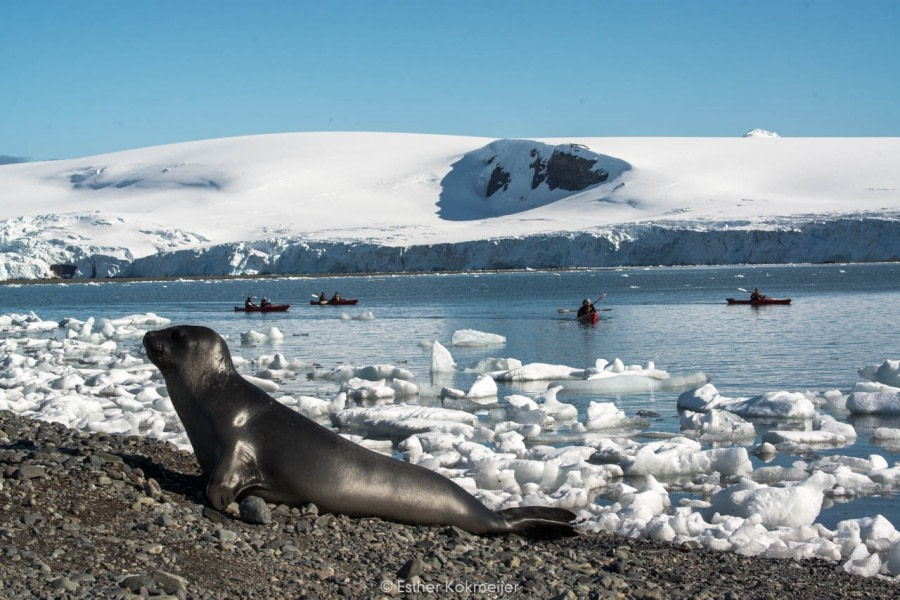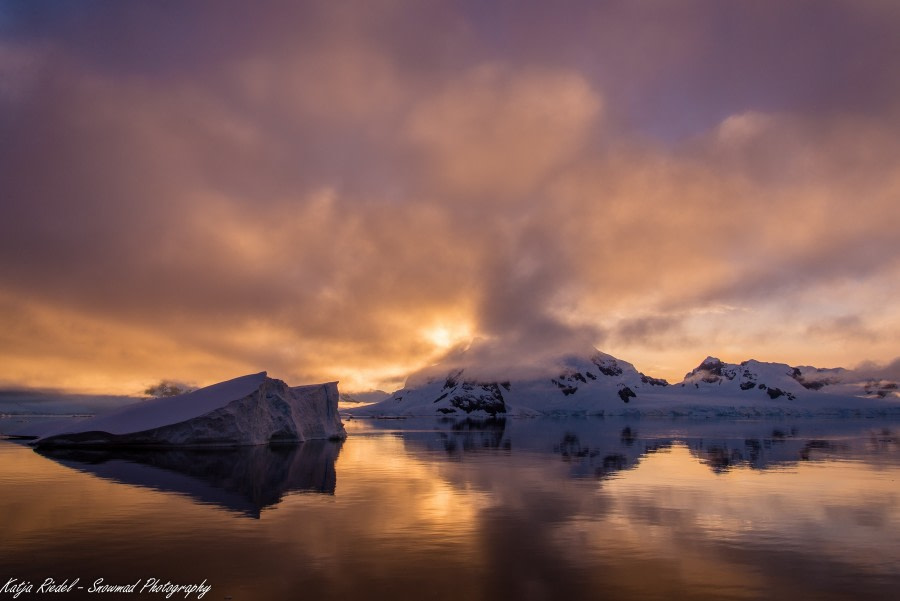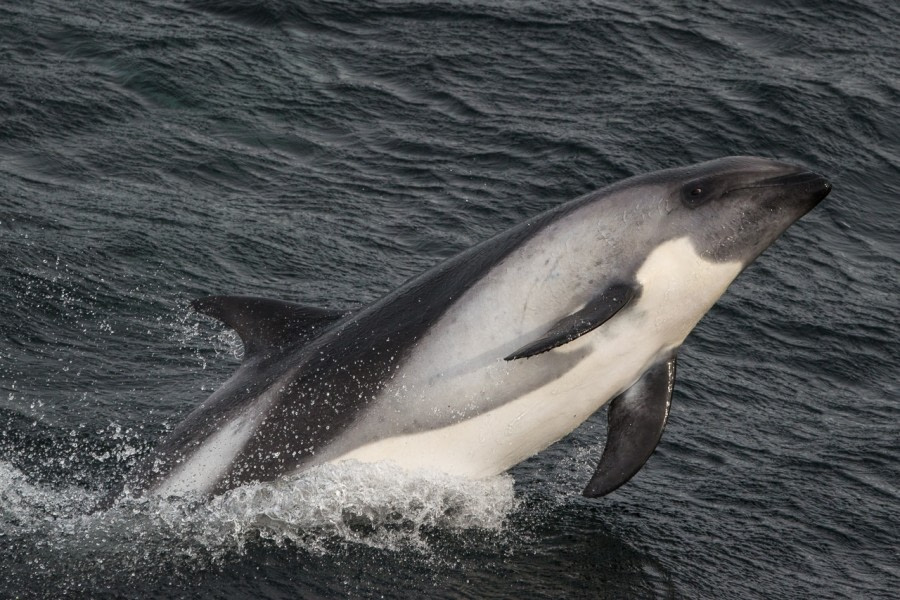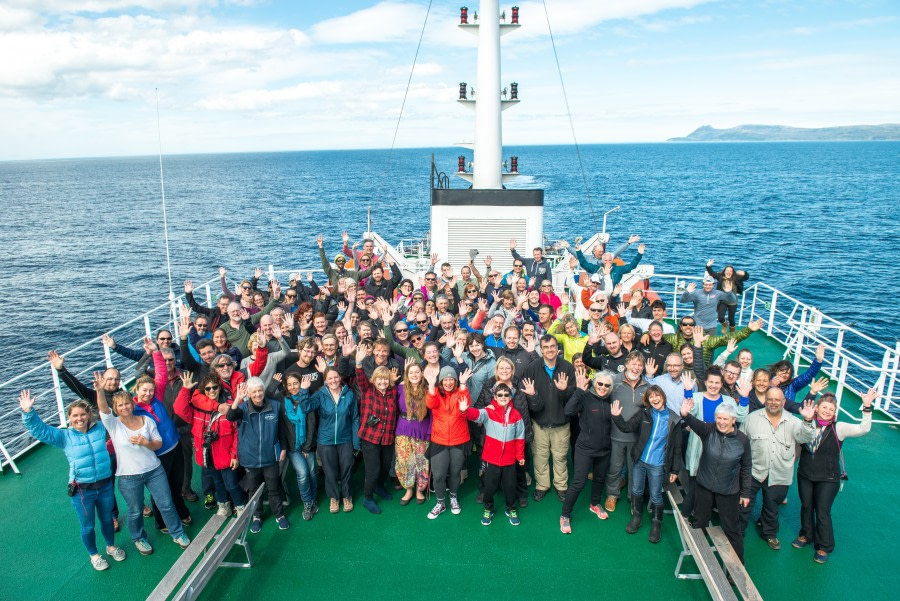| Datum: |
01.01.2018 |
| Positie: |
64º 40’ 35 S / 062º 37’ 7 W |
| Wind: |
Calm |
| Weer: |
Snowing |
| Luchttemperatuur: |
+2 |
Our New Year began at 6:00 when Lynn announced that there were Humpback whales bubble net feeding just off the bow of the MV Plancius. It was an incredible way to begin 2018 and it was only getting better. We had a delicious breakfast and then prepared our equipment for our very first landing in Antarctica at Cuverville Island. The excitement was palpable as we waited to board the gangway to visit the site. Cuverville is regarded as having one of the largest rookeries of Gentoo penguins in the Antarctic Peninsula. The island was named after Admiral Cuverville, who helped finance Gerlache’s expeditions.
Conditions in the bay were smooth and the landing was easy, helped by the fact that the bay was full of icebergs, thus protecting our landing site from any swell. We spent the morning exploring the shore of the island between the various colonies, taking time to savor the feeling of being amongst so many thousands of relatively tame birds. The penguins at Cuverville were still sitting on eggs although many now had two cute chicks. Numerous Brown skuas were circling looking for an easy lunch of an unguarded egg or chick. For those wanting to stretch their legs there was also the chance to walk up to a view point where you gained a magnificent vantage point overlooking the bay.
As we had time on our side we took the scenic route back to the ship, with a short cruise to take a closer look at the icebergs. As always in good light, the kaleidoscope of blues in the ice did not fail to astound, coupled with a myriad of different shapes and sizes. It was undeniably a visual smorgasbord for the lover of ice! Those lucky passengers who got into the zodiacs early were also treated to an amazing sighting of Humpback whales.
Back on board we had a delicious buffet lunch and then it was time to get ready for the afternoon landing at Danco Island. Here the expedition team had brought snowshoes ashore for us. For people keen to hike, the snowshoes made the walk a bit easier through the soft snow. Nacho led the hike round the island and up to the summit. Surprisingly there were even more Gentoo penguins right at the top. The views from the plateau were stunning looking up and down the Ererra Channel in both directions and across to the Antarctic Peninsula. With such calm, pleasant weather it was good to be able to stay a while and take in the surroundings.
For those who didn’t want to walk to the top, there was enough to see on shore. Antarctic terns, Snowy sheathbills, Kelp gulls and Brown skuas were busy trying to source their next meal, while the Gentoo penguins were constantly traversing up and down the penguin highways from the water’s edge up to the colonies.
Once the group was gathered back at shore, it was time for the infamous ‘Polar Plunge’. So those mad enough to brave the icy water got changed. Unbelievably, around fifty brave souls stripped off and took the plunge, for some this was a quick in and out (after a few choice words!), while others seemed to quite enjoy the experience and happily posed for photos. Respect and congratulations to you all!
Back on board it was time for our daily recap, in which Katja spoke about the Gentoo penguins we had seen and Lynn briefed us on the plans for tomorrow.
Dinner was a scrumptious BBQ put on by the hotel staff and we enjoyed a drink and a spot of dancing with the rest of the staff and crew. After dinner, it was time for the campers to get ready for a night at Kerr Point. The staff went ashore first to prepare the site and by 21:30 all passengers were on shore and ready for a true Antarctic adventure!
Camping
A beautiful day merged into a beautiful night, it stayed calm, great conditions for camping. Campers went first to dinner and began layering up for the night. Camping bags were handed out and we made our way into the zodiacs. We had to navigate a bit of ice and rocks to get to our campsite but with our excellent drivers we made it to a place where we could climb ashore. Our camping site for the night was Kerr Point. As we clambered up we had Gentoo penguins to the left and almost a dozen Weddell seals to our right. Everyone set to digging their pits, sharing the shovels and working together. Once everyone was set up for the night we scrambled around working out how to spell Antarctica with our bodies, implementing our new design with 3 people for the letter ‘N’ and two people for ‘C’. By this time it was already 22:30 and as we had to wake up in a few short hours, everyone headed to the warmth of their bivies. Some of us slept like babies while others stayed up most of the night listening to the sounds of falling ice and avalanches from the mountain. Puffy snowflakes fell on and off throughout the night. Very early in the morning the wake-up call was sounded. We woke to the cold and packed our gear, refilled the holes and donned our life vests. We also woke up to not one but two birthdays! Sebastian and Darlene both slept into their birthdays in Antarctica. We sung a round of ‘Happy birthday to you’. By this time our lovely drivers had arrived to bring us back home. Getting back on-board Plancius was a welcome relief as we enjoyed our warm showers and hearty breakfasts.
Kayaking
Well what a cracking start to the year for both kayaking groups today. The morning group had the advantage of getting ready the night before so by the time we dropped anchor at Cuverville, we were on the aft deck and ready to go. The bosun showed us another way to offload the kayaks to the waiting zodiac which saved time. Incredibly, we were all on the water by 09:30 which gave us the whole morning to play with. So we headed off along the steep side of Cuverville Island, aiming to get in close and look at the birds, BUT whales in the Errera Channel proved too much of a distraction so we went to have a closer look. And did we strike lucky! One Humpback decided to investigate us further, coming close to us and even diving directly under two of the kayaks. As if this wasn’t enough, a large whale further across the channel put up an incredible display of breaching, four times in a row. We were all secretly glad it wasn’t closer as there was a lot of water displaced. In windless conditions we made good progress and managed to get comfortably around Cuverville Island, surprising a couple of crabeater seals on the far side and spotting a yacht, the Kotick that had come in to the sheltered harbour.
The afternoon kayaking group, Sierra Club members, also had an incredible day. They watched a Storm petrel fluttering over the water just in front of the kayaks for a few minutes. They also spent 3-4 minutes in total silence, listening to the sounds of Antarctica. We then headed towards Danco Island, again kayaking back and forth across the Channel in a zigzag pattern as we followed whales that were diving and coming up for air. These whales were a little more elusive than the ones in the morning but it was fantastic to see them. The sun came out in the afternoon, and a slight wind picked up which made for cold hands and faces. We found shelter behind a rock islet then headed closer to shore for a seal spot, two Weddell seals were hauled up there. It was really difficult to spot them as they did a very good impression of a rock – that is, until they idly raised their flippers in the air.
Mountaineering
Today we made two trips of 180 m up a satellite peak which lies at the bottom of Mt Tennant. The excursion required that we wore crampons for the last 25 m scrambling to the summit which involved a tricky rock step and a short icy slope. From the summit we were rewarded with views of the Gerlache Strait and beyond to Anvers Island.
